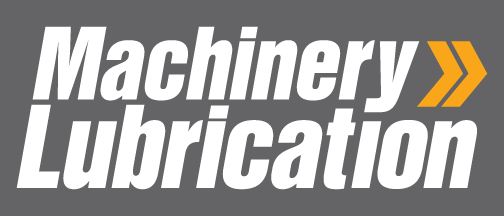 For many industries, production downtime and scheduled outages are few-and-far between. While logic and best practice may suggest a need for system redesign, a filtration upgrade or a complete flush, the pressure from production to continue operations until the next scheduled shutdown usually wins out - and rightly so.
For many industries, production downtime and scheduled outages are few-and-far between. While logic and best practice may suggest a need for system redesign, a filtration upgrade or a complete flush, the pressure from production to continue operations until the next scheduled shutdown usually wins out - and rightly so.
So what can be done as a stopgap measure to help relieve the problem until a lasting solution can be found? One possibility may be the use of a portable filtration system. Because many problems are caused by particle build-up, the simple act of using a portable system may be all it takes to make it until a permanent solution can be found. It works much the same way as an offline dialysis unit may be used on a patient with kidney failure, until a permanent solution, in this case a transplant, can be found.
A good case in point comes from Flint Hills Resources (formerly Koch Refining), in Corpus Christi, Texas, where a portable filtration unit was successfully deployed to help keep a production-critical hydraulic system running until the next shutdown.
Refinery Cat Cracker operation depends on the reliability of hydraulically operated slide valves to maintain precise differential pressure between the reactor and regenerator.
Loss of differential pressure controls due to slide valve problems can lead to severe operational problems, up to and including a unit shutdown.
During the summer of 2000, Cat Cracker operating personnel began to notice that the slide valves were not as responsive as before. They believed the valves were starting to hang up. After investigating the problem, plant instrument technicians concluded that the slide valves were sticking due to inadequate hydraulic fluid cleanliness.
After further investigation, it was noted that the hydraulic reservoir was a carbon-steel, uncoated vessel, resulting in a build-up of rust on the inside of the reservoir. While the textbook solution may be to clean or modify the reservoir to prevent corrosion, the need to keep this unit online meant that a short-term solution needed to be found to bolster the 10-micron full flow filters, which were not sufficient to remove the smaller particles thought to be responsible for the problem.

Figure 1
In an attempt to improve system cleanliness to acceptable levels, the lubrication technician purchased a portable filtration cart from Oil Filtration Systems and installed it in an offline loop, drawing hydraulic fluid from the main supply line, where it was most contaminated due to tank corrosion, and returning the cleaned oil to the return line, as shown in Figure 1.
The cart was equipped with dual canisters each with ß3=200, 3-µm filters and a differential pressure gauge to signify the required change-out of the filter elements. Figure 2 illustrates the effects of what a few hours of filtration can do, improving overall fluid cleanliness from 20/19/17 to 14/12/11 (less than 1 percent of the original concentration).
|
||||||
|
Figure 2. Effects of Offline Filtration
|
By employing this side-stream system, Flint Hills was able to maintain proper slide valve control until the February 2002 shutdown. During this outage, they planned to chemically clean and flush the Cat Cracker hydraulic system and upgrade the full-flow filters to provide a permanent, lasting solution to the problem.
With increasing pressure to improve equipment reliability and increase production, a portable filtration system is an indispensable tool for any manufacturing plant. Whether it’s used as a stopgap measure to limp through to the next outage as in the case of Flint Hills, to periodically clean gearboxes that perhaps don’t warrant the expense of a dedicated filtration system or as an oil transfer system to clean new oil during top-ups and oil changes, a portable filtration system is a must-have tool for any lube technician’s toolbox.
Actually, there are many uses for a filter cart that go beyond periodic contaminant drawdown. These many applications include:

Power Flush
This involves reducing the oil level in a tank or sump and flowing the oil at a high velocity across the bottom to push out low-lying sediment.
Wand Flush
A wand is attached to one of the cart hoses and is used first to discharge at high pressure (kicking up adherent debris) and then the flow is reversed and the wand vacuums the sediments.
Transfer Cart
Oil is transferred from a storage container (tote, drum, etc.) to the machine’s lube compartment.
Cleaning Stored Lubes
In this application, the cart multipasses fluid out of and back into the drum or tote to drawn down contamination, for instance, going from an ISO 24/21/18 to a 17/14/11.
System Drain
Sump and reservoir drains will wash out debris better if the waste oil is pumped out as opposed to simply flowing out by gravity.
Offline Filtration
Filter carts can be mounted permanently to a machine to supplement filtration.
Line Flush
Often remote lines and components need to be partitioned to enable flushing. This can be done easily with a filter cart.
Hose Cleaning
New hoses can be flushed of debris using a filter cart before they are installed on the machine.
Repairs and Equipment Rebuild Flushing
After machines are serviced they need to be flushed thoroughly before they are returned to service.
Flushing During Equipment Commissioning
New machines have original fabrication debris and dirt that have ingressed during transport and storage.







